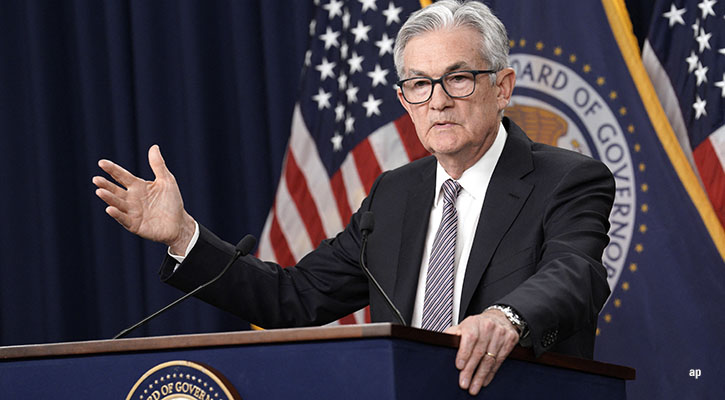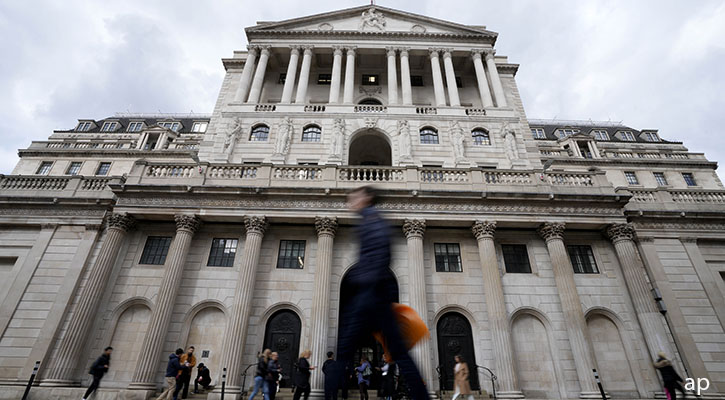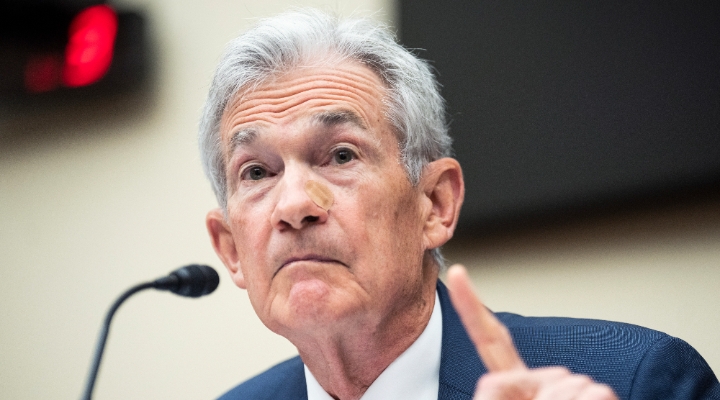
The Federal Reserve chose to keep the federal-funds rate unchanged at its Wednesday meeting, with chair Jerome Powell emphasizing a cautious approach to additional rate hikes. The federal-funds rate currently stands at a target range of 5.25%-5.50%, following 500 basis points in hikes implemented from March 2022 to July 2023. Wednesday’s decision wasn’t a surprise; the market-implied probability of rates staying unchanged has been above 90% since mid-October. But looking further back, the probability of a rate hike had been around 50% in early September.
The Fed’s own projections from the Federal Open Market Committee, last issued in September, called for at least one more rate hike to occur after either the November or December meetings. So what caused the shift in thinking in the market (and the Fed) that led to today’s decision? First, inflation data has continued to look mild.
Core inflation was just 2.4% on a quarter-over-quarter annualised basis in the third quarter of 2023 when measured by the personal consumption expenditures price index favoured by the Fed. The central bank can’t be sure that inflation will fall back to its 2% target and maintain it. Powell noted during the press conference that this process still has a “long way to go.” But enough progress has been seen to call for patience from the Fed.
Second, there’s been a massive runup in bond yields over the past month or so. The 10-year US Treasury note yield has increased about 70 basis points since early September. Borrowing costs in the private sector, such as the 30-year mortgage rate, have risen commensurately. This will likely weigh on economic growth in the coming quarters. Powell didn’t say the jump in bond yields was a primary driver of the decision to maintain rates today. But he did say that if the yield increase persists, it would call for a lower path for the federal funds rate than what’s currently anticipated.
Whether the yield increase persists depends on the extent to which it is driven by temporary supply and demand factors in the Treasury market. The spike in bond yields is just one example of how the effects the Fed’s prior rate hikes have had on the real economy have yet to fully play out. Bank loan growth is far from done contracting. And other private sector borrowers will see interest burdens rise as they roll over maturing debt. The extent to which balance sheet vulnerabilities could lead to sharp jumps in financial distress is unknown. Powell has recently been more balanced in recognising the risks of overtightening as well as undertightening, citing the incomplete impact of the rate hikes that have already been deployed.
<p
As such, the Fed’s rhetoric is inching in a less hawkish direction, opening the door for the central bank to pivot to cutting in the first half of 2024, as many expect. We ultimately expect the federal-funds target rate range to fall from the current 5.25-5.50% to 3.75-4.00% by year-end 2024 and 2.00-2.25% by year-end 2025. In our view, this will be needed to sustain healthy economic growth. A faster reduction in inflation than the Fed expects will open the door to this aggressive monetary easing. Powell noted that the decision at December’s meeting is still wide open. But markets interpreted his rhetoric as incrementally dovish, as the probability of a rate hike fell compared to yesterday and now stands at less than 20%. We expect the Fed to refrain from further rate hikes.




























